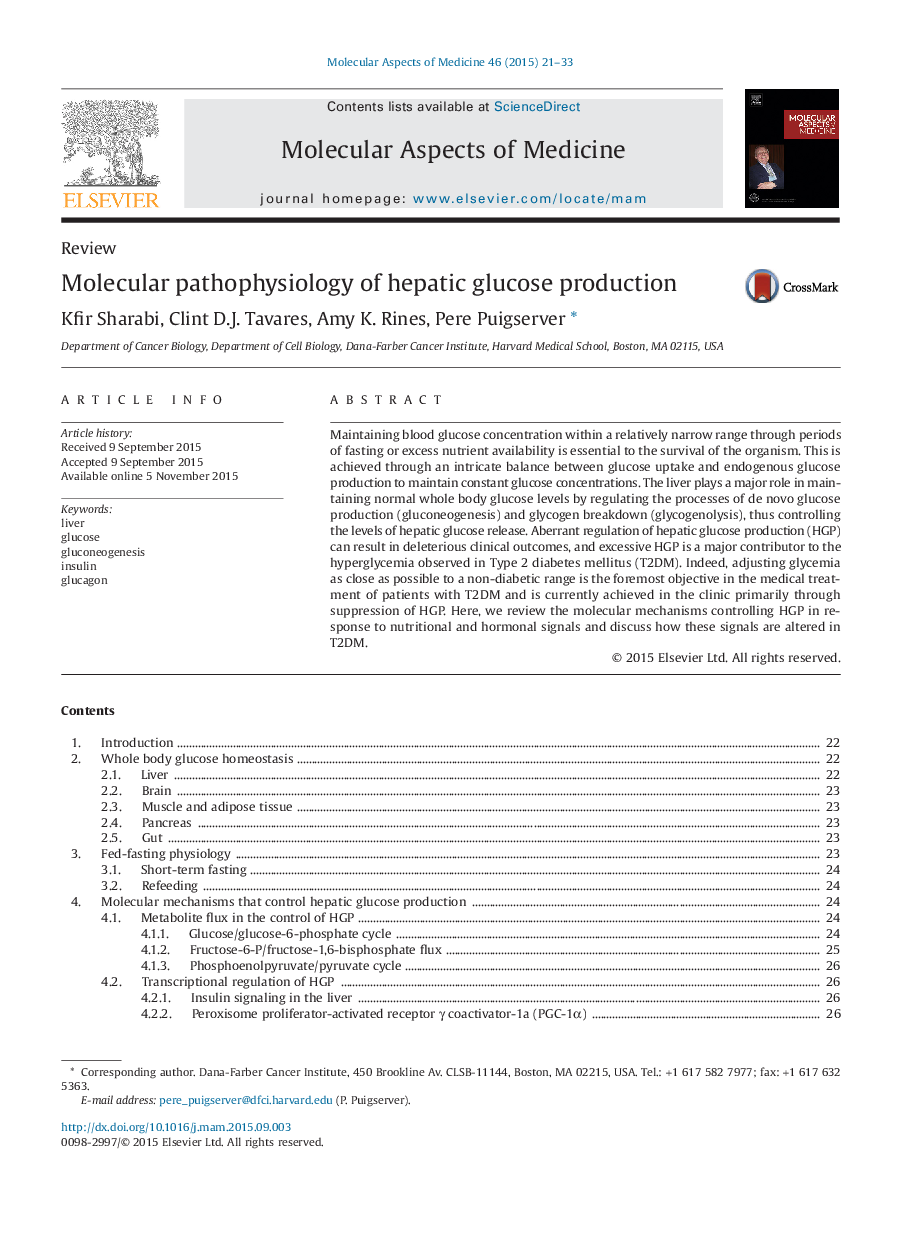| کد مقاله | کد نشریه | سال انتشار | مقاله انگلیسی | نسخه تمام متن |
|---|---|---|---|---|
| 1995591 | 1541439 | 2015 | 13 صفحه PDF | دانلود رایگان |
Maintaining blood glucose concentration within a relatively narrow range through periods of fasting or excess nutrient availability is essential to the survival of the organism. This is achieved through an intricate balance between glucose uptake and endogenous glucose production to maintain constant glucose concentrations. The liver plays a major role in maintaining normal whole body glucose levels by regulating the processes of de novo glucose production (gluconeogenesis) and glycogen breakdown (glycogenolysis), thus controlling the levels of hepatic glucose release. Aberrant regulation of hepatic glucose production (HGP) can result in deleterious clinical outcomes, and excessive HGP is a major contributor to the hyperglycemia observed in Type 2 diabetes mellitus (T2DM). Indeed, adjusting glycemia as close as possible to a non-diabetic range is the foremost objective in the medical treatment of patients with T2DM and is currently achieved in the clinic primarily through suppression of HGP. Here, we review the molecular mechanisms controlling HGP in response to nutritional and hormonal signals and discuss how these signals are altered in T2DM.
Journal: Molecular Aspects of Medicine - Volume 46, December 2015, Pages 21–33
